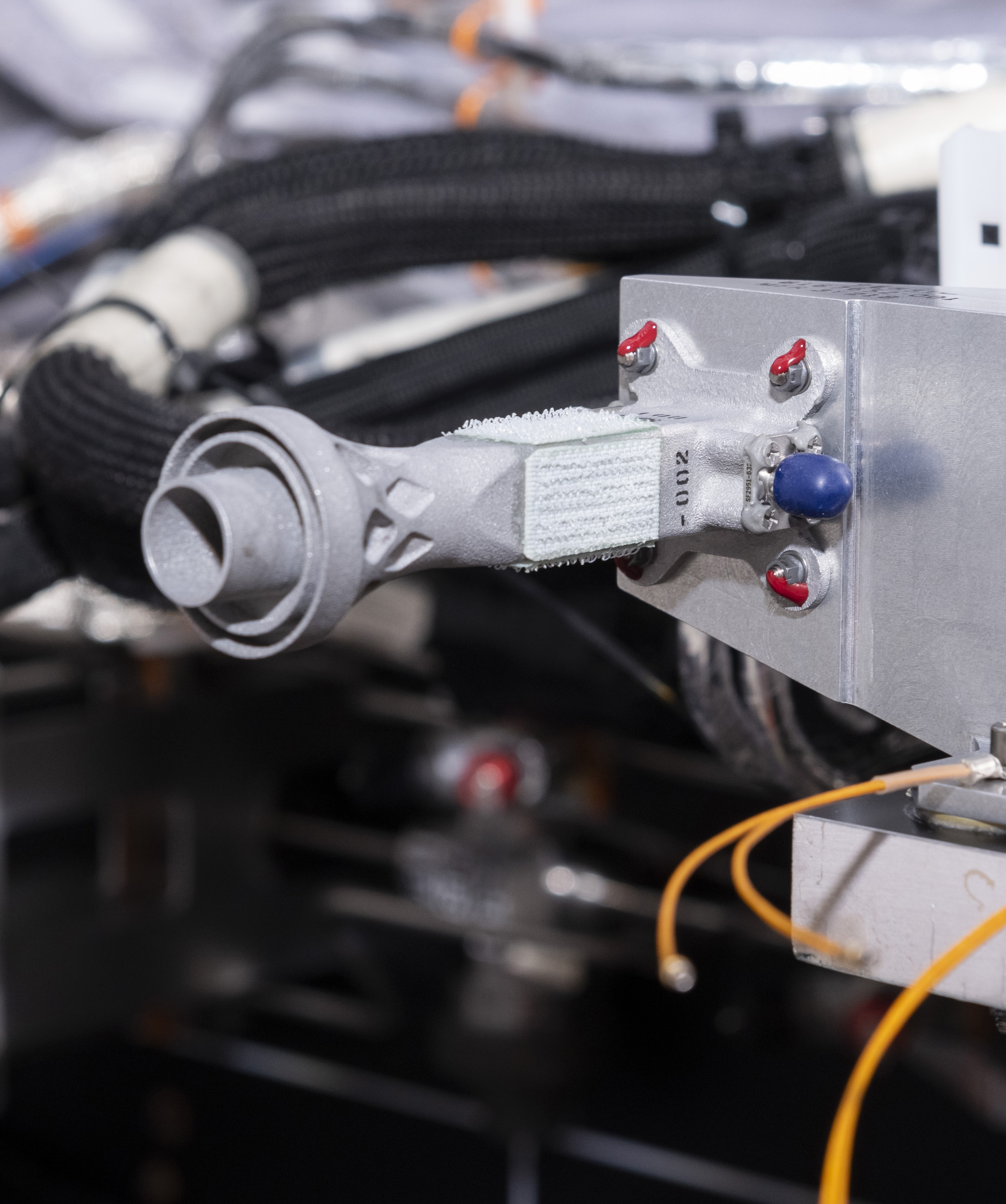Boeing satellite engineers recently created what is possibly the first ever 3D printed metal antenna for a satellite that will be sent into space on the AMOS 17. Now being built by Boeing, it wasn’t originally designed to have a 3D printed antenna. However, this development shows one how quickly such flight-proven additive manufacturing materials and processes are changing how complex space systems are built. Boeing’s team of satellite engineers decided to use the technology to develop the one-of-a-kind, custom made design late in the project. The antenna itself is crucial for the space-bound communications sat and might prove useful for subsequent projects.
The soon-to-be-launched AMOS 17 is being built for Spacecom, an Israeli firm which provides broadcast and communication services to Europe, the Middle East, Africa and Asia. The launch, scheduled for the second quarter of 2019, will send the AMOS 17, a multi-band state-of-the-art satellite, to space where it will be the most advanced high-throughput satellite to provide communication services.
“The use of 3D printing gives us some fundamental benefits,” the AMOS 17 Program Manager Brian Baker explained to 3DPrint.com. “Replacing a design that involved multiple parts bolted together with a single 3D printed unit means fewer parts to assemble and fewer interfaces, which reduces the possibility of issues during manufacturing and testing. Also, the conventional, heavier antenna requires two or three months to manufacture, while the lighter 3D version can be printed in under a week. All that adds up to savings in mass, time and ultimately, costs.”
Boeing data estimates that additive manufacturing is making possible decreases in satellite parts quantity, which are reducing average spacecraft component weight by more than 30 percent.
The aft command antenna was manufactured from aluminum alloy powder using selective laser sintering. Test versions were output on both an SLM Solutions SLM280 and an EOS M290 printer. The antenna will receive signals in Ku-band delivering commands from the ground for the Boeing 702 model satellite. Equipped with a flexible digital payload and powered by two deployable solar arrays, the 5,500 kilos satellite will have a lifetime of at least 19 years.
“Qualifying this high-reliability, low-cost design opens up a wide application space in 3D printed microwave devices,” said Senior Technical Fellow, Richard Aston, of this additive manufacturing application. “We’ve already designed several more 3D printed flyaway antennas in multiple frequency bands for additional customers including the United States government.”
Although additive manufacturing was not originally part of the AMOS 17 project, Boeing has been turning to 3D printing for the manufacture of satellites for some years. They have been trying to incorporate that kind of speed into their satellite and spacecraft business, and with the new antenna, that’s just what they did. In 2017 Boeing applied additive manufacturing technology to the Crew Space Transportation (CST)-100 Starliner spacecraft to reduce mass, cost and cycle time. The first significant application of additive manufacturing in this area of Boeing was to the SES-15 communications spacecraft, where a multi-skilled team of individuals led by Richard Aston, applied additive manufacturing in concert with new composite and adhesive materials yielding a lightweight, low cost and thermally stable design solution for a nadir surface-mounted optical bench.
In an interview with 3DPrint.com, Nicole Schoenborn, the mechanical designer of the artefact, emphazised that “our antenna is designed for this exact purpose and frequency band, versus a generic one that is not tailored to the application.”
The design also increases the repeatability of the product, they all perform consistently.
Schoenborn went on to say that “we also developed a way to design the geometry so that the antenna is mechanically and thermally stable, and the design allowed us to print it without non-flight secondary support structures that would later need to be removed by hand.”
The motivation to use 3D printing came from Boeing, as suggested by the AMOS 17 program manager, Sharon Krakover, making the top aerospace maker a competitive force against some of the newcomers that have been using 3D printing abundantly, such Space X, Jeff Bezos’ Blue Origin and Stratolaunch Systems. Now Boeing’s engineers are facing the challenge of scaling up the use of additive manufacturing for the many projects they are undertaking in the new commercial space race.
Subscribe to Our Email Newsletter
Stay up-to-date on all the latest news from the 3D printing industry and receive information and offers from third party vendors.
You May Also Like
3D Printing Unpeeled: New Arkema Material for HP, Saddle and Macro MEMS
A new Arkema material for MJF is said to reduce costs per part by up to 25% and have an 85% reusability ratio. HP 3D HR PA 12 S has been...
3D Printing News Briefs, January 20, 2024: FDM, LPBF, Underwater 3D Printer, Racing, & More
We’re starting off with a process certification in today’s 3D Printing News Briefs, and then moving on to research about solute trapping, laser powder bed fusion, and then moving on...
3D Printing Webinar and Event Roundup: December 3, 2023
We’ve got plenty of events and webinars coming up for you this week! Quickparts is having a Manufacturing Roadshow, America Makes is holding a Member Town Hall, Stratafest makes two...
Formnext 2023 Day Three: Slam Dunk
I’m high—high on trade show. I’ve met numerous new faces and reconnected with old friends, creating an absolutely wonderful atmosphere. The excitement is palpable over several emerging developments. The high...


































